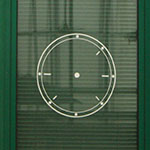Euroacademia Conferences
 Europe Inside-Out: Europe and Europeanness Exposed to Plural Observers (9th Edition) April 24 - 25, 2020
Europe Inside-Out: Europe and Europeanness Exposed to Plural Observers (9th Edition) April 24 - 25, 2020 Identities and Identifications: Politicized Uses of Collective Identities (9th Edition) June 12 - 13, 2020
Identities and Identifications: Politicized Uses of Collective Identities (9th Edition) June 12 - 13, 2020 8th Forum of Critical Studies: Asking Big Questions Again January 24 - 25, 2020
8th Forum of Critical Studies: Asking Big Questions Again January 24 - 25, 2020 Re-Inventing Eastern Europe (7th Edition) December 13 - 14, 2019
Re-Inventing Eastern Europe (7th Edition) December 13 - 14, 2019 The European Union and the Politicization of Europe (8th Edition) October 25 - 26, 2019
The European Union and the Politicization of Europe (8th Edition) October 25 - 26, 2019 Identities and Identifications: Politicized Uses of Collective Identities (8th Edition) June 28 - 29, 2019
Identities and Identifications: Politicized Uses of Collective Identities (8th Edition) June 28 - 29, 2019 The European Union and the Politicization of Europe (7th Edition) January 25 - 26, 2019
The European Union and the Politicization of Europe (7th Edition) January 25 - 26, 2019 7th Forum of Critical Studies: Asking Big Questions Again November 23 - 24, 2018
7th Forum of Critical Studies: Asking Big Questions Again November 23 - 24, 2018 Europe Inside-Out: Europe and Europeanness Exposed to Plural Observers (8th Edition) September 28 - 30, 2018
Europe Inside-Out: Europe and Europeanness Exposed to Plural Observers (8th Edition) September 28 - 30, 2018 Identities and Identifications: Politicized Uses of Collective Identities (7th Edition) June 14 - 15, 2018
Identities and Identifications: Politicized Uses of Collective Identities (7th Edition) June 14 - 15, 2018
Transgressive Figures: Performance Art in China. A Case Study from 1985 until Today
-
-

-
Presentation speakers
- Petra Pölzl, Dramatics & Chinese Studies, Free University of Berlin, Germany
Abstract:
The focus of the following paper is an investigation on performance art presented between its appearance in the year 1985 and 2010 in mainland China. The actions discussed are closely related to socio-political upheavals in the country. They can be seen as a reflection and reaction to those socio-political events in which the abject 1 body becomes a site of identification. For this wave of shock art the art historians Thomas Berghuis and Cheng Meiling coined out the terms flesh art2 and animalworks3. The time frame suggested by both scholars is the decade between 1994 and 2004. Due to my research on figures of transgression in Chinese Performance Art I discovered that the abject body as a site of identification can already be found before 1994 and after 2004. To dissolve the given time frame of the terms flesh art and animalworks, which include the abject body, I suggest to use the term transgression4 as described by Georges Bataille. Evidence of this observation can be found in a whole range of art works, such as the performances presented by the collectives Concept 21 and M Art Group in the mid-eighties. In the beginning of the 1990’s, Fen·Ma Liuming’s work concentrated on subjects of the emancipated and en-gendered body. The corporeal torture in Zhang Huan’s early performance art is linked to the one-child-policy and overpopulation. Yang Zhichao’s as well as He Yunchang’s works in the 1990’s and after 2004 are referring to the globalization and the simultaneously emerging quest for identity in China’s society. In the works to be discussed the performer-body becomes a transgressive figure in search for identification of the self, which happens throughout a denial of morality, a disturbance of identity, the system, order, rule and law. -
Related Presentations

Thomas Cole: An Exegesis of Time
- Lorena Morales

















